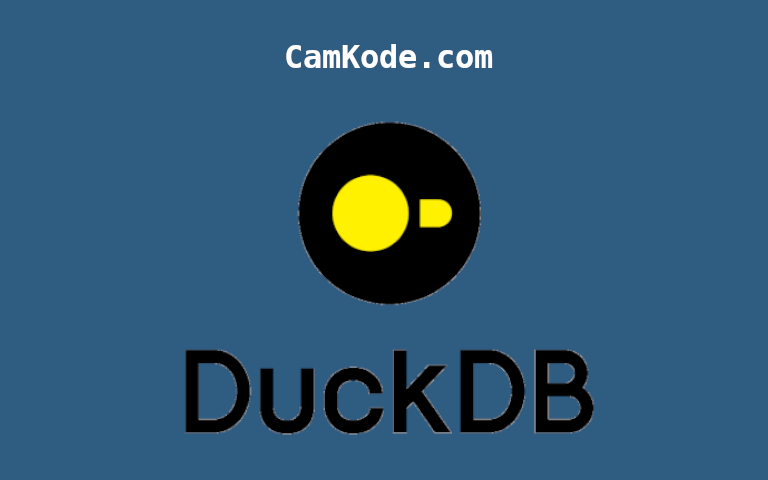Unleashing Analytical Power with DuckDB
Posted by Kosal

In the realm of data analysis and manipulation, efficient handling of large datasets is paramount. Enter DuckDB, an open-source analytical database management system designed to tackle analytical queries with lightning speed and versatility. In this article, we'll delve into the world of DuckDB, exploring its features, installation process, and practical examples to harness its analytical power effectively.
Understanding DuckDB: DuckDB stands out for its performance and flexibility in handling analytical workloads. Built with efficiency in mind, DuckDB is capable of processing large datasets seamlessly, making it a preferred choice for researchers, data analysts, and developers alike. Its ability to work with various data formats including CSV, Parquet, and Apache Arrow adds to its appeal, allowing users to seamlessly integrate DuckDB into their existing data pipelines.
Installation: Getting started with DuckDB is a breeze. Whether you're on Linux, macOS, or Windows, DuckDB provides straightforward installation instructions tailored to your platform. Let's walk through the process of installing DuckDB and the Python package to interact with it:
Install DuckDB:
- Head over to the DuckDB GitHub repository: DuckDB GitHub.
- Follow the installation instructions provided in the repository's README file, ensuring to choose the appropriate installation method for your operating system.
DuckDB CLI
DuckDB's Command-Line Interface (CLI) serves as a powerful tool for managing databases, executing queries, and performing analytics tasks efficiently. In this comprehensive guide, we'll explore DuckDB CLI's functionalities through hands-on examples, enabling you to harness its capabilities effectively in your data projects.
-
Connecting to a Database
- Create a new database or connect to an existing one:
duckdb mydatabase.db
- Create a new database or connect to an existing one:
-
Basic Commands
- Creating Tables:
CREATE TABLE users (id INTEGER PRIMARY KEY, name VARCHAR); - Inserting Data:
INSERT INTO users VALUES (1, 'Alice'), (2, 'Bob'); - Querying Data:
SELECT * FROM users; - Output:
┌───────┬─────────┐ │ id │ name │ │ int32 │ varchar │ ├───────┼─────────┤ │ 1 │ Alice │ │ 2 │ Bob │ └───────┴─────────┘
- Creating Tables:
-
Advanced Operations
-
Joins:
CREATE TABLE departments (id INTEGER PRIMARY KEY, name VARCHAR); INSERT INTO departments VALUES (1, 'HR'), (2, 'Finance'); SELECT users.name, departments.name AS department FROM users JOIN departments ON users.department_id = departments.id; -
Aggregation:
SELECT department_id, COUNT(*) AS num_employees FROM users GROUP BY department_id;
-
-
Transaction Management
- Begin a transaction:
BEGIN TRANSACTION; - Rollback changes:
ROLLBACK; - Commit changes:
COMMIT;
- Begin a transaction:
-
Optimization Techniques
- Indexing:
CREATE INDEX idx_users_name ON users(name); - Analyzing Query Performance:
EXPLAIN SELECT * FROM users WHERE name = 'Alice';
- Indexing:
DuckDB Python
-
Install DuckDB Python Package:
- After installing DuckDB, you'll need to install the Python package to interact with it.
- Open your command-line interface (CLI) or terminal.
- Use pip, Python's package manager, to install the DuckDB Python package by running the following command:
pip install duckdb - This command will download and install the DuckDB Python package along with its dependencies.
-
Connecting to DuckDB: Once DuckDB and the Python package are installed, connecting to DuckDB is a matter of a few lines of code. Let's explore how to connect to DuckDB using Python:
import duckdb # Connect to DuckDB connection = duckdb.connect(database=':memory:', read_only=False)In this example, we establish a connection to DuckDB with an in-memory database. However, you can replace
'memory'with the path to an existing DuckDB database file if you wish to connect to an existing database. -
Executing Queries: With the connection established, you're ready to execute SQL queries against the DuckDB database. Let's create a table and insert some data:
# Execute SQL commands connection.execute("CREATE TABLE my_table(id INTEGER, name STRING)") connection.execute("INSERT INTO my_table VALUES (1, 'John'), (2, 'Jane')")In this snippet, we create a table named
my_tablewith two columns,idandname, and insert some sample data into it. -
Fetching Results: After executing a query, you can fetch the results for further analysis:
# Fetch results result = connection.execute("SELECT \* FROM my_table") rows = result.fetch_all() for row in rows: print(row)Here, we execute a SELECT query to retrieve all rows from the
my_tabletable and print the results. -
Closing the Connection: To ensure proper resource management, it's essential to close the connection when it's no longer needed:
# Close the connection connection.close()By closing the connection, you release any resources associated with it, ensuring a clean exit.
Conclusion: DuckDB empowers data analysts and developers with a blazing-fast analytical database management system that excels in handling large datasets efficiently. With its ease of installation, seamless integration with various programming languages, and robust performance, DuckDB proves to be a valuable tool in the arsenal of any data-driven organization. As you embark on your analytical journey, consider leveraging DuckDB to unlock new insights and drive informed decision-making like never before.
Reference:
- DuckDB Documentation: DuckDB Documentation
- DuckDB GitHub Repository: DuckDB GitHub Repository
- DuckDB Blog: DuckDB Blog